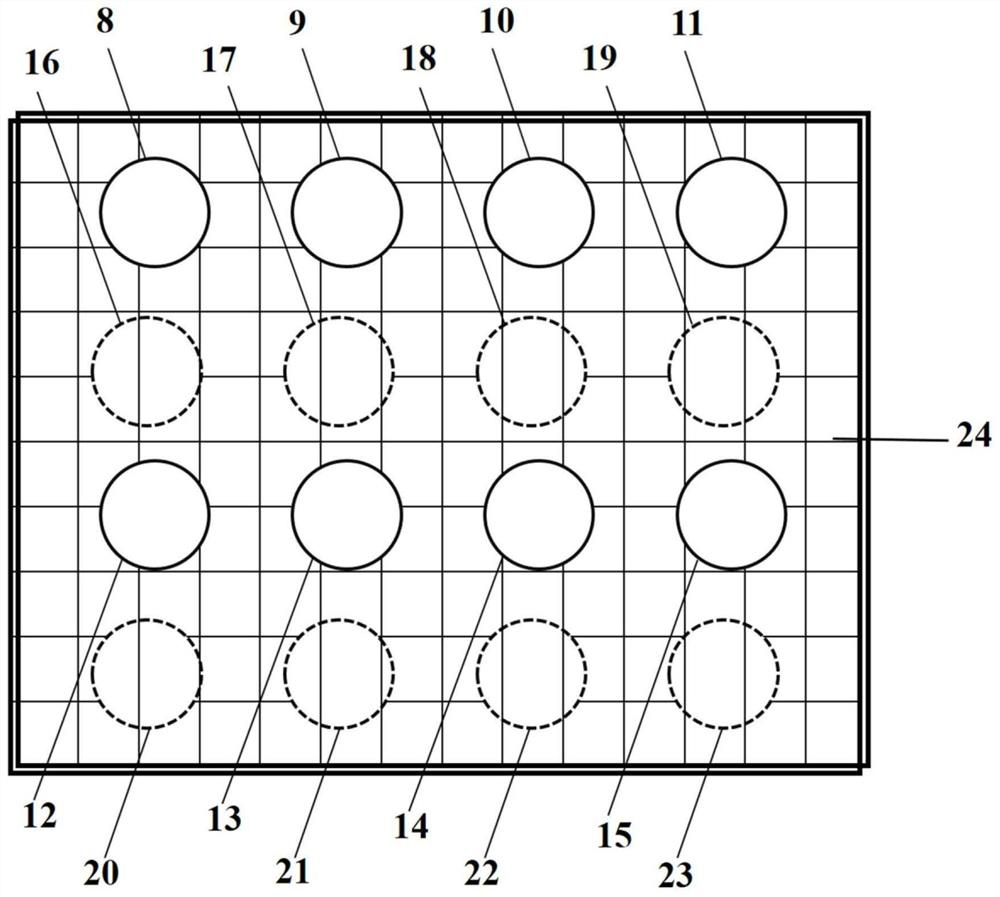A multi-element paper-based sliding microfluidic chip based on a cerium metal-organic framework
A metal-organic framework and microfluidic chip technology, applied in laboratory containers, material analysis, chemical instruments and methods through observation of the impact on chemical indicators, can solve problems such as uneven color development, and achieve Simple processing steps, high thermal stability, and wide pH range
- Summary
- Abstract
- Description
- Claims
- Application Information
AI Technical Summary
Problems solved by technology
Method used
Image
Examples
Embodiment 1
[0048] Structure of paper-based sliding microfluidic chip
[0049] Such as Figure 1-3 As shown, a multi-component paper-based sliding microfluidic chip for visually and quantitatively detecting the content of glucose and uric acid, the substrate is porous filter paper, including the upper reaction chip a and the lower color development chip b. The upper layer reaction chip a and the lower layer color development chip b have the same shape and size, and both include a rectangular main body area and side folding wings, and the main body area is divided into a hydrophilic area and a hydrophobic area; The upper and lower chips are assembled and fixed by the origami method, and slides are provided for the sliding of the upper and lower chips; the hydrophilic region includes the reaction region and the color region, maintaining the porous nature of the filter paper, and the liquid can penetrate and diffuse in this region; The hydrophobic area is the other part of the main body exc...
Embodiment 2
[0086] Preparation method of paper-based sliding microfluidic chip for quantitative detection of glucose content
[0087] Include the following steps:
[0088] (1) Use Adobe Illustrator to design the upper and lower layer patterns of the chip;
[0089] (2) Use a Xerox Phaser 8570DN wax spray printer to print the upper and lower layer patterns on A4-sized porous medium-speed filter paper;
[0090] (3) Cut out the printed upper and lower layer patterns;
[0091] (4) Heat the cut patterned filter paper on a heating platform at 160°C for 2 minutes to cool it down;
[0092] (5) 60 μL of BSA (30 μM) and EDC (100 mM) were dissolved in PBS buffer (pH=5.4), added dropwise to the hydrophilic area of the upper reaction chip, and dried at room temperature; 60 μL of BSA (30 μM), glucose Oxidase (16 μM) or urate oxidase and EDC (100 mM) were dissolved in PBS buffer (pH=5.4), added dropwise to the hydrophilic area of the upper reaction chip, and dried at room temperature for use;
[00...
Embodiment 3
[0096] Method for detection of glucose and uric acid by paper-based sliding microfluidic chip
[0097] S1. Prepare a multi-component paper-based sliding microfluidic chip: take a multi-component paper-based sliding microfluidic chip for visual and quantitative detection of glucose and uric acid content in the sample;
[0098] S2. Add glucose (uric acid) standard solution dropwise to the reaction area of the upper reaction chip, and incubate at 37°C;
[0099] S3. Slide the upper and lower paper chips to connect to the hydrophilic channel, and the hydrogen peroxide generated on the upper sheet migrates to the color development area of the lower layer due to the gravity of the solution and the wicking effect of the filter paper, and completes the color development reaction and is dried;
[0100] S4. Flip the dried chip over, use a mobile phone to take pictures and record the color, and use ImageJ analysis software to read the color intensity of the color-developed area;
[0...
PUM
 Login to View More
Login to View More Abstract
Description
Claims
Application Information
 Login to View More
Login to View More - R&D
- Intellectual Property
- Life Sciences
- Materials
- Tech Scout
- Unparalleled Data Quality
- Higher Quality Content
- 60% Fewer Hallucinations
Browse by: Latest US Patents, China's latest patents, Technical Efficacy Thesaurus, Application Domain, Technology Topic, Popular Technical Reports.
© 2025 PatSnap. All rights reserved.Legal|Privacy policy|Modern Slavery Act Transparency Statement|Sitemap|About US| Contact US: help@patsnap.com



